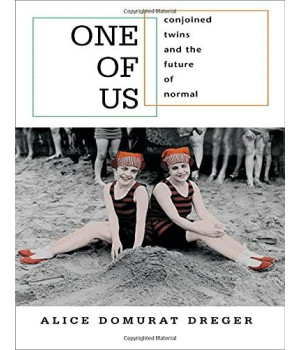One Of Us: Conjoined Twins And The Future Of Normal
SKU: DADAX0674018257
ISBN : 9780674018259
Condition : New
Shipping & Tax will be calculated at Checkout.
US Delivery Time: 3-5 Business Days.
Outside US Delivery Time: 8-12 Business Days.
One of Us: Conjoined Twins and the Future of Normal
Must children born with socially challenging anatomies have their bodies changed because others cannot be expected to change their minds? One of Us views conjoined twinning and other "abnormalities" from the point of view of people living with such anatomies, and considers these issues within the larger historical context of anatomical politics. Anatomy matters, Alice Domurat Dreger tells us, because the senses we possess, the muscles we control, and the resources we require to keep our bodies alive limit and guide what we experience in any given context. Her deeply thought-provoking and compassionate work exposes the breadth and depth of that context--the extent of the social frame upon which we construct the "normal." In doing so, the book calls into question assumptions about anatomy and normality, and transforms our understanding of how we are all intricately and inextricably joined.From The New YorkerPart history of medicine, part consciousness-raising freak show, this surprisingly entertaining book examines cultural reactions to conjoined twins and other anatomical anomalies. Dreger argues that Victorians were more appreciative than moderns of people born "different," viewing them as "authorities on a unique and strangely attractive experience." Nowadays, pediatric surgeons so prize normalcy that they perform sexual surgery on infants without concern for adult function; they may also withhold information from parents, and even override their consent, when dealing with birth defects. Dreger sometimes strays into lit-crit goofiness-for her, conjoined twins call to mind every "crazy-in-love" song you've ever heard-but her examples persuasively make the case that the anatomically different feel normal to themselves.Copyright
Write a review
Your Name:
Your Email:
Your Review:
Note: HTML is not translated!
Rating: Bad Good
Enter the code in the box below:



